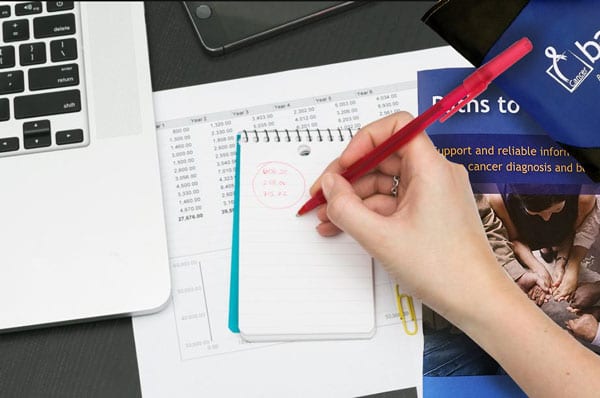
by Annettra Farrington | Jan 14, 2020 | Educational Articles
- Have a conversation with your health care team about your treatment plan and the expected cost. Talk to your doctor about how cancer treatment could affect your ability to work.
- Understand your health insurance coverage. It is vital that you pay your health insurance premiums on time and in full. If you don’t have health insurance, immediately find out if you can obtain a policy or if you qualify for Medicaid.
- Meet early with your oncology social worker, navigator or advocate, and be candid about any financial difficulties and other needs you have. They are there to help you manage your cancer care costs.
- Be informed about your legal rights and all benefits available to you through your employer: disability insurance, accommodations in your job duties, hours/leave time. Your spouse should do the same with their employer.
- Prepare a budget. Organize and keep track of your bills. Verify insurance benefits are correctly applied. (Ask a trusted family member or friend to help you with this.) Appeal insurance claim denials. (Ask a member of your health care team to help with this.)
- If you are experiencing financial hardship, explain your situation to creditors and medical providers and ask for their help. You may be able to negotiate a discount or more time to pay your bills.
- Tap into the expertise of nonprofits in the cancer community. They can help you navigate resources and find assistance with costs related to treatment, co-payments, prescription drugs, basic needs, transportation, childcare as well as insurance matters and other support services. They can often help you apply. Several organization offer free services from their navigators and social workers: CancerCare, Livestrong, PAN, CSC, CancerCare pub
- Look into federal and other programs in your state that can help cover expenses and replace income if you can’t work during and after treatment. Apply quickly if you are eligible for benefits.
- Consider other of income: retirement accounts, available credit, personal loan, cashing in life insurance policy, sale of real estate or personal property.
- The financial burden of cancer can impact your physical and mental well-being. Asking for help can be hard but allowing others to lend a hand alleviates stress for you and your loved ones and lets your focus on your recovery.

by Annettra Farrington | Nov 19, 2019 | Educational Articles
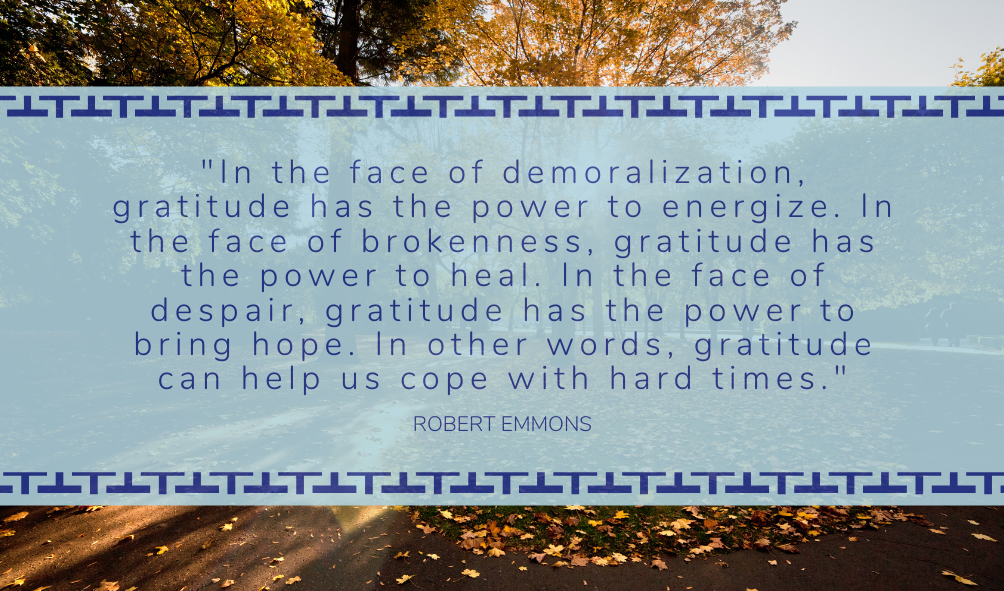 What are you grateful for today? November is a time to reflect more closely on the year (as December just gets crazy) and be thankful for what we have. Yes, these are things we should be doing every day but November is a great time to get started if you haven’t been practicing gratitude regularly.
What are you grateful for today? November is a time to reflect more closely on the year (as December just gets crazy) and be thankful for what we have. Yes, these are things we should be doing every day but November is a great time to get started if you haven’t been practicing gratitude regularly.
 Gratitude is appreciating what you have and noticing the good (even small things!) in your life – with or without a cancer diagnosis. Gratitude can help ground you and get in touch with what you are feeling at that moment. That old cliché “stop and smell the roses or the fall leaves or the snow” can have some real physical and mental benefits for your well-being.
Gratitude is appreciating what you have and noticing the good (even small things!) in your life – with or without a cancer diagnosis. Gratitude can help ground you and get in touch with what you are feeling at that moment. That old cliché “stop and smell the roses or the fall leaves or the snow” can have some real physical and mental benefits for your well-being.
People tend to be happier, have more positive emotions and greater self-esteem when practicing gratitude. Physically, it can reduce depression symptoms, enhance your sleep, and increase your exercise which leads to other health benefits.
While it can be difficult to be thankful for anything when you or someone you care about is dealing with cancer, receiving care from a compassion and dedicated healthcare team is definitely something to be grateful for. Gratitude can actually increase your resilience, help you find the joy along the way, and even ease the fear of recurrence.
There are many ways to practice gratitude so don’t think about it being another daunting task on your to do list, it can be as simple or complex as you like – make it work for you! As you start to think about what you are grateful for you can instantly feel a change in your attitude and the more you do it the more you will experience the benefits. It’s not difficult and below are some simple ways to get you started today.
- Think: At some point in the day take a moment and identify 1-3 things you are grateful for, or try a guided meditation to help focus on the present. (I love my job, but I also love my family and need to put them first.)
- Write: Start a journal and be specific (I’m thankful my loved one could take time from work to go with me to my appointment) or put slips of paper in a jar throughout the day, download a calendar and jot them down. Send a note to someone telling them why you are grateful for them.
- Visual: Take photos of things you are grateful for or cut pictures out of a magazine. (The flowers/balloons in the infusion room brought a smile to everyone’s face.)
However you decide to practice gratitude, make it yours and practice it regularly so it becomes second nature to you and then reap the emotional, social, health, and personal benefits. As you begin treatment, finish treatment, head to an appointment, support a friend or loved one remember to find something to be grateful for despite the challenging feelings you may have at that moment and hopefully that will brighten your day (or at least that moment) a little.We are grateful for all those who believe in the Bag It bag and provide it to patients, friends, loved ones, or themselves and hope that you feel supported and empowered.
Here are some additional resources to help you get started today!
Ted Talks
Practice Gratitude
Gratefulness
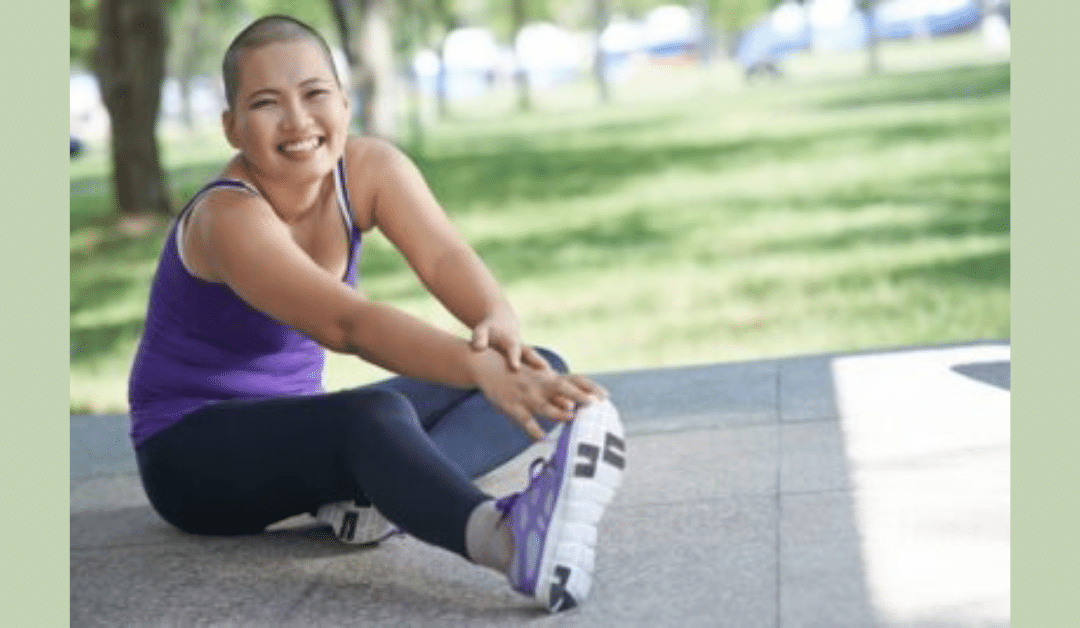
by Annettra Farrington | Sep 30, 2019 | Blog
 We are told over and over again about the benefits of physical activity, but many of us find lots of excuses not to do it, or not to do it consistently anyhow. Kudos to the many rockstars that embrace it and engage in some sort of activity on a consistent basis – please motivate us! Physical activity impacts many aspects of our lives and can help improve your mood, your sense of well-being and improve endurance while helping with depression and fatigue. Studies suggest that physical activity may help to prevent/reduce the risk of a secondary cancer later in life and/or lower the risks of other cancers. So, go enjoy the cooler temps of fall and get moving. (If you are in Tucson join Bag It for our annual Take a Hike at Catalina State Park on October 27th) Physical activity includes walking, swimming, cycling, gardening and other activities that keep you from sitting or remaining sedentary for long periods of time – even dancing! It is always important to consult with your healthcare team, especially if making major changes to your activity or if you are in or recently completed (cancer) treatment. This doesn’t mean you can’t move and research shows that physical activity during and after treatment can actually help. Talk with your doctor and other healthcare team members about your physical activity. They can provide guidance and help you find exercise resources.
We are told over and over again about the benefits of physical activity, but many of us find lots of excuses not to do it, or not to do it consistently anyhow. Kudos to the many rockstars that embrace it and engage in some sort of activity on a consistent basis – please motivate us! Physical activity impacts many aspects of our lives and can help improve your mood, your sense of well-being and improve endurance while helping with depression and fatigue. Studies suggest that physical activity may help to prevent/reduce the risk of a secondary cancer later in life and/or lower the risks of other cancers. So, go enjoy the cooler temps of fall and get moving. (If you are in Tucson join Bag It for our annual Take a Hike at Catalina State Park on October 27th) Physical activity includes walking, swimming, cycling, gardening and other activities that keep you from sitting or remaining sedentary for long periods of time – even dancing! It is always important to consult with your healthcare team, especially if making major changes to your activity or if you are in or recently completed (cancer) treatment. This doesn’t mean you can’t move and research shows that physical activity during and after treatment can actually help. Talk with your doctor and other healthcare team members about your physical activity. They can provide guidance and help you find exercise resources.
How will physical activity improve my health?
What type of activity should I do? How often and for how long?
Is it safe to exercise during cancer treatment?
Should I avoid certain exercises?
What resources are available to me?

by Annettra Farrington | Sep 26, 2019 | Videos, What's New
Our Executive Director, Mindy Griffith talks with Jennie G. at KXCI on The Nonprofit Spotlight about Bag It.
LISTEN HERE
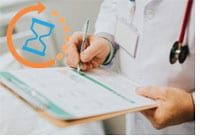
by Annettra Farrington | Aug 15, 2019 | Educational Articles
None of us have as much time as we’d like when we see the oncologist, primary care physician, or any member of our healthcare team. Maximize those precious few minutes and make the most of your visits with these hacks:
Before you go:
-
- Prepare for the appointment at least a few days in advance. Complete any online research you want to do (Our Resource Center has reliable cancer websites).
- Use My Appointment Summary Log (found in My Companion Guidebook)
 to organize what you need to bring and discuss, where and when you are going.
to organize what you need to bring and discuss, where and when you are going.- Write down your questions (use the small journal or sheets provided).
- Leave room to write down the answers you are given.
- Prioritize your top 3 questions to ask the doctor. (Other members of the healthcare team can answer or obtain answers for the other questions for you).
” I still use the bag…it is a Godsend, I am always using it. It has taught me to always take notes, whenever I have a question for ANY doctor I write the question and answer down. I use it as a reference for dates and other information regarding any of my medical history.”
At the visit:
- Bring someone with you. Let them know how they can help you: extra set of ears, take notes, give info you may have forgotten.
- Good communication with your healthcare team is key! Click here for tips
- Consider recording the visit (ask permission first) to replay it at a later time.

- Bring your Bag It My Companion Guidebook or appropriate pieces within to refer to questions, forms and logs you prepared. Write down the answers and other info given to you so you don’t have to try to remember it.
- Ask for copies of your reports, labs, information from the visit. Add them to your notebook.
Click below for questions to ask your healthcare team from Paths to Survivorship booklet.



 What are you grateful for today? November is a time to reflect more closely on the year (as December just gets crazy) and be thankful for what we have. Yes, these are things we should be doing every day but November is a great time to get started if you haven’t been practicing gratitude regularly.
What are you grateful for today? November is a time to reflect more closely on the year (as December just gets crazy) and be thankful for what we have. Yes, these are things we should be doing every day but November is a great time to get started if you haven’t been practicing gratitude regularly. Gratitude is appreciating what you have and noticing the good (even small things!) in your life – with or without a cancer diagnosis. Gratitude can help ground you and get in touch with what you are feeling at that moment. That old cliché “stop and smell the roses or the fall leaves or the snow” can have some real physical and mental benefits for your well-being.
Gratitude is appreciating what you have and noticing the good (even small things!) in your life – with or without a cancer diagnosis. Gratitude can help ground you and get in touch with what you are feeling at that moment. That old cliché “stop and smell the roses or the fall leaves or the snow” can have some real physical and mental benefits for your well-being.
 We are told over and over again about the benefits of physical activity, but many of us find lots of excuses not to do it, or not to do it consistently anyhow. Kudos to the many rockstars that embrace it and engage in some sort of activity on a consistent basis – please motivate us! Physical activity impacts many aspects of our lives and can help improve your mood, your sense of well-being and improve endurance while helping with depression and fatigue. Studies suggest that physical activity may help to prevent/reduce the risk of a secondary cancer later in life and/or lower the risks of other cancers. So, go enjoy the cooler temps of fall and get moving.
We are told over and over again about the benefits of physical activity, but many of us find lots of excuses not to do it, or not to do it consistently anyhow. Kudos to the many rockstars that embrace it and engage in some sort of activity on a consistent basis – please motivate us! Physical activity impacts many aspects of our lives and can help improve your mood, your sense of well-being and improve endurance while helping with depression and fatigue. Studies suggest that physical activity may help to prevent/reduce the risk of a secondary cancer later in life and/or lower the risks of other cancers. So, go enjoy the cooler temps of fall and get moving. 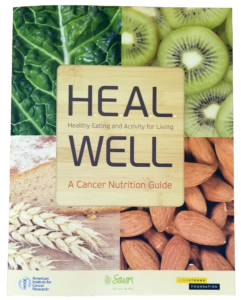


 to organize what you need to bring and discuss, where and when you are going.
to organize what you need to bring and discuss, where and when you are going.
Recent Comments